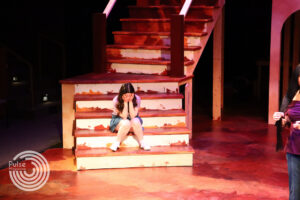Greatest Horror Films of All Time: 2000s Horror

Something happened at the turn of the century. The audience became tired of the tried and true Slasher films which dominated the ‘80s and ‘90s and were on the lookout for terrifying films with more substance. With films like EXistenZ and Fight Club setting the stage for subversive cinema in the last gasp of the 1900s, and those who took the baton and pushed fear-mining into new territory as audiences were often more inspired to consider the stories philosophically at night, rather than lay awake in terror (though sometimes both!).
And while there would be slews of remakes and reimaginings of classic horror films in the ‘00s, almost none would resonate with audiences as little more than a weekend box office statistic during a random weekend in October. What these films proved is horror’s ability to last in the zeitgeist with critical and cult appeal.
What follows is a list of films that broke new ground and set new standards for genre films, often allowing filmmakers to add more honesty and passion to horror than came in the decades before.
5. Get Out (2017)
Jordan Peele announced himself to the world of cinema with this way better than an expected foray into horror. By making his directorial debut an allegory for modern racism, Peele hits all the appropriate horror tropes in the most unexpected ways. Luring the audience into a sense of calm until an explosive climax exposes who the true monsters of modern American culture are: white liberals. Daniel Kaluuya is riveting as both an audience proxy into every minority’s worst nightmare and the central protagonist who uncovers the dark secrets hiding under the floorboards of polite society.
While Peele has continued to polish his style with Us and Nope, he has yet to achieve the heights of this brilliant takedown of the bourgeoisie. Peele, along with others like Danny Glover and Flying Lotus, has allowed broad audiences a glimpse into the Black experience of America by using afro-surrealism to show how the fear of what is around every corner is just another part of life for marginalized groups.
4. Saw (2004)
This is how you start a craze. James Wan pushed the tension to 11 with this low-budget blend of exploitative torture porn and puzzle-box suspense. While the plot is well known enough now, the thought of waking up in a dingy backroom somewhere with a stranger chained to a radiator and a corpse in between you and being punished for unremembered sins, was beyond terrifying. The most important aspect of the first in this series, with eight movies currently and another scheduled for 2023, was how fresh it felt at the time, something that will always make a genre film stand out.
And while Wan has gone onto other horror tentpoles, Saw deserves the credit for allowing him to show a new century what can be capable with a low budget, gallons of gore, and a vivid imagination.
3. Tie Hereditary (2018)/The VVitch (2015)
Both Ari Aster and Robert Eggers exploded onto the horror scene with their respective debuts in “elevated horror.” What these films did, other than introduce the world to their unbelievable talents, was allow audiences to take horror seriously again. Drawing from the works of Roman Polanski and William Friedkin, these filmmakers seldom rely on jump scares, while shocking audiences by making them leave the theater haunted by malignant fear.
In The Witch, Eggers was obsessive in his attention to detail, making sure the 17th-century clothes, houses, and fears are all perfect for the period. The film also introduced the world to the powerhouse that is Anya Taylor-Joy by showcasing her committed performance, which is almost enough on its own to justify its impact. Taylor-Joy digs her teeth into every nuance of the character, fully prepared to “live deliciously.”
With Hereditary, audiences were taken into the blackest of dark family dramas. Aster’s ability to use settings as character built with personality, using mise-en-scene to bring this horror-drama to life. Toni Collette is brilliant as a buoy for the audience to grasp onto as we follow the story as it takes us to places we would never expect, and regret ending up at, a cornerstone of hard-core horror as a genre. One thing is for sure, the less you know about this film going into it, the better.
2. Let the Right One it (2008)
In this brilliant reimagining of the Vampire trope, director Tomas Alfredson masterfully subverts the bloodsucker theme by making the monster 12 years-old. In what might be the most humanized monster movie of the century so far, Alfredson maximizes his limited budget and resources to tell an equally compelling and terrifying story. The use of locations set against the cold, harsh Swedish winter and brilliantly nuanced sound design grip the viewer in ways few horror films ever have.
We first meet the young protagonist Oskar living alone with his mother in a cheap apartment. He is relentlessly bullied at school and collects news clippings of local murders. All the makings of antisocial behavior. One cold evening, a young girl named Eli and her caretaker move in next door. Eli takes a liking to Oskar and what follows is a beautiful exploration of teenage angst and the search for understanding set to the cold, unforgiving landscape and the brutality of the outside world.
The power of the film radiates from the young actors. Their honest and genuine curiosity sells the characters and motivations better than any adult could with similar material. The cinematography perfectly represents the shallow depth of field we have as young teenagers, alone and blind to what the periphery even means, or how it could help us or hurt us.
With a not-as-great American remake by future The Batman director Matt Reeves, this is a film which has solidified its contribution to this generation of horror, whether mass audiences know it or not.
1. American Psycho (2000)
This is the one that kicked it all off. Mary Harron’s take on the Brett Easton Ellis novel of the same name kept everything intact that was great about the book and left all the boring shit on the cutting room floor. Christian Bale was such an inspired casting choice for this role, it’s hard to believe we even got this version when Leonardo DiCaprio was the original planned star.
The most important contribution of this film is that we did not get a traditional horror movie. This was a scathing satire on obscene wealth and superficiality. Even author Brett Easton Ellis has praised the film saying, “it clarified the novel.”
Director Mary Harron knew what she was doing, once saying “it’ll be a really good film for the new millennium,” she wasn’t wrong. What this film brought to the table was the ability for the film to have a clear message, while being aggressively ambiguous about the actual plot.
Probably the most inspired element of the film is that a woman helmed the project. Only a person who could truly understand the depths of Bateman’s evil could have ever truly brought this film to life.
Another interesting aspect of the movie is that only the key players were involved in the subversion. Willam DeFoe was asked to do his lines multiple ways, never knowing what was true in the film and what wasn’t, and we are positive Jared Leto was never in on the joke (has he ever been in on any joke?)This midnight black satire is well served by the surreal dedication of Ellis, Harron, and Bale.
The primary issue for the audience is to figure out which scenes are satire and which are honest, spoiler alert: There is no honesty in this film which does not come from a victim who is about to get chopped up by an ax, which adds to the film’s relevance.
This film set the standard for subversive terror and pitch-black humor in the 21st century. And 20 years later, audiences still understand the true villains of American Psycho are the silos provided by 1% wealth and a grotesque obsession with superficiality.







